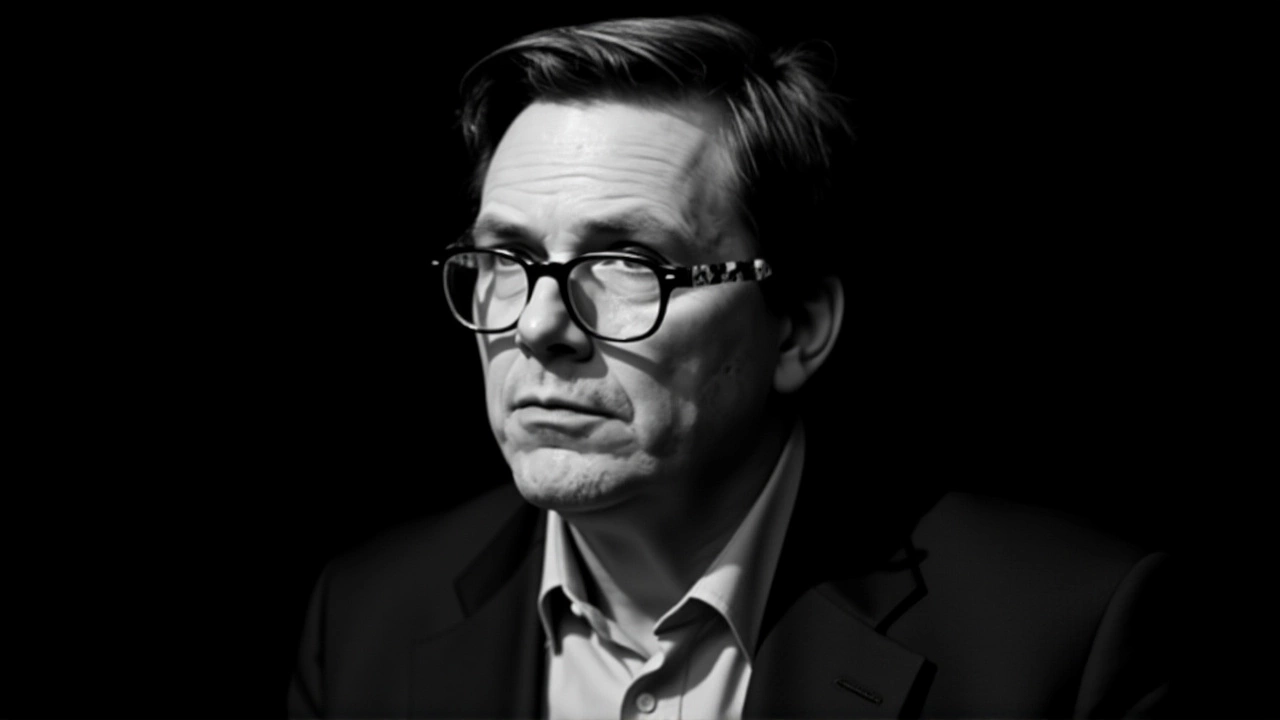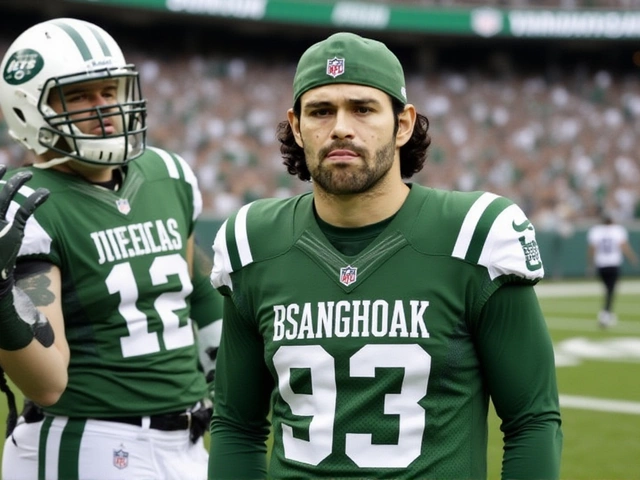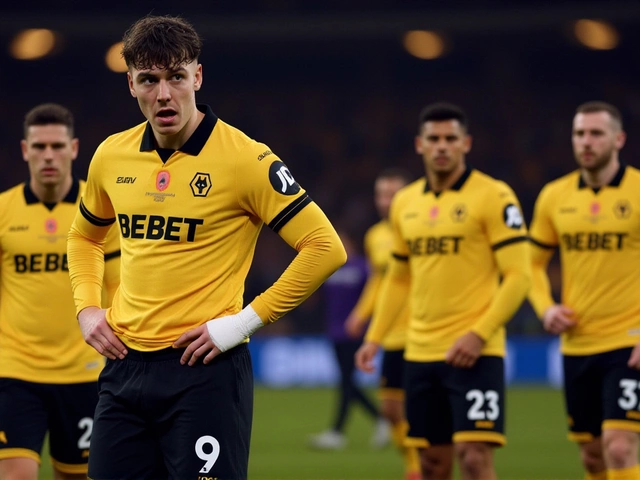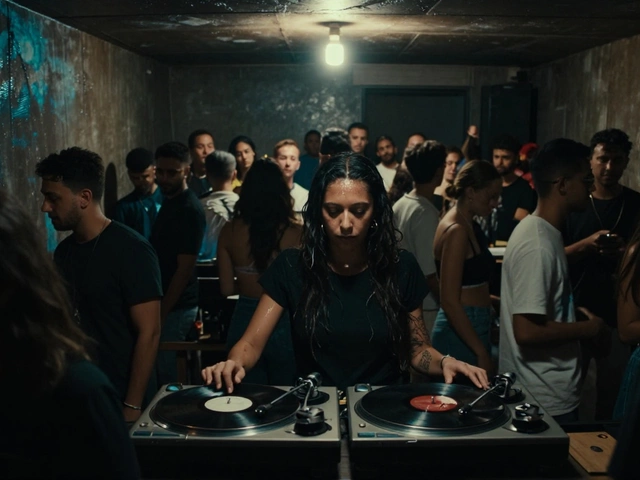On Wednesday, November 19, 2025, millions around the world will observe International Men's Day under the theme 'Celebrating Men and Boys'—a quiet but urgent call to confront the silent crisis of male mental health. Organized by the International Men's Day organization in Sydney, Australia, this year’s observance isn’t just about recognition—it’s about survival. With male suicide rates remaining stubbornly high across the globe, the day’s focus on encouraging men to seek help isn’t symbolic. It’s life-or-death.
Why This Year Matters More Than Ever
The 2025 theme builds directly on the momentum of 2023’s Zero Male Suicide campaign and 2024’s Positive Male Role Models, creating a three-year arc of escalating urgency. While previous years spotlighted role models and visibility, 2025 drills down into action: How do we get men to talk before it’s too late? The International Men's Day organization isn’t waiting for policy changes. It’s launching a historic 9-hour global webcast, running from 3:00 PM to midnight Australian Eastern Daylight Time, anchored in Sydney. Over 50 speakers—including therapists, fathers, veterans, and former athletes—will share raw, unfiltered stories of breakdowns, recovery, and the shame that keeps so many silent.
Here’s the thing: men die by suicide at nearly four times the rate of women in countries like the U.S., the U.K., and Australia. Yet, only one in three men with depression seek professional help. Why? Cultural conditioning. The message has been clear for generations: Be strong. Don’t cry. Handle it yourself. That’s not strength. It’s a death sentence.
The Six Pillars Behind the Movement
Behind the scenes, the campaign is anchored in six guiding principles, documented by Wikipedia and embraced globally. They’re not fluffy slogans—they’re blueprints for change:
- Promoting positive male role models beyond celebrities—teachers, mechanics, single fathers
- Celebrating men’s contributions to family, community, and caregiving
- Focusing on men’s physical, emotional, social, and spiritual well-being
- Addressing male health disparities in life expectancy and chronic disease
- Encouraging gender equality by recognizing men’s need for emotional support
- Reducing male suicide and self-harm through open dialogue
These aren’t abstract ideals. In Soweto, South Africa, over 5,000 men gathered in 2009 at the Orlando Communal Hall—an event that still echoes in today’s outreach. Back then, Deputy President Kgalema Motlanthe stood before a sea of men, many living with HIV, and said, “Your pain is not weakness. Your silence is not dignity.” That moment became a turning point.

A Month of Momentum: November’s Hidden Calendar
November isn’t just about one day. It’s a cascade of awareness. Movember, the global beard-growing campaign for prostate and mental health, kicks off the month. Then comes Men’s Equality Month, which highlights how men are often left out of social safety nets—especially in custody battles, workplace injuries, and homelessness. And on November 20, International Children’s Day wraps it up, tying fathers, uncles, and mentors directly to the next generation.
That’s why events like the International Men’s Day Breakfast 2025 in Gin Gin, Australia—scheduled for November 20 at 5:30 PM—are so vital. They’re not just coffee and pancakes. They’re safe spaces where men can say, “I’m not okay,” without fear of judgment.
What’s Still Missing?
Despite progress, gaps remain. Workplace mental health programs still rarely target men. School curricula rarely teach boys how to identify emotional distress. And in many cultures, therapy is still seen as a “woman’s thing.” The International Men's Day organization admits it’s not enough to host webcasts. Real change requires policy shifts: better funding for male-specific counseling, mandatory mental health education in vocational training, and media campaigns that show men crying, asking for help, and being loved for it.
One veteran in Ohio told a reporter last year: “I lost three brothers to suicide. I didn’t cry at their funerals. I cried when I finally called a therapist—three years later.” His story isn’t rare. It’s routine.

What Comes Next?
By 2026, organizers plan to launch a global “Men’s Mental Health Passport”—a digital tool that connects men to local counselors, peer support groups, and crisis lines in their native language. Pilot programs are already underway in Canada and the U.K. Meanwhile, schools in New Zealand are testing a new curriculum where boys as young as 10 learn to name their emotions using a simple “Feelings Wheel.” Early results show a 40% drop in disciplinary incidents.
Change is slow. But it’s happening. And it starts with one man saying, “I need help.”
Frequently Asked Questions
Why is International Men's Day focused on mental health instead of other issues?
While International Men's Day covers many topics, mental health is prioritized because men die by suicide at significantly higher rates than women—up to 3.5 times higher in some countries. This isn’t about ignoring other issues; it’s about addressing the most immediate, preventable crisis. The 2023 theme, 'Zero Male Suicide,' and 2025’s 'Celebrating Men and Boys' both stem from data showing that over 75% of male suicides occur among men who never sought professional help.
How does this differ from Movember?
Movember focuses primarily on fundraising for prostate cancer and mental health research through beard-growing campaigns. International Men's Day, organized by the Sydney-based group, is broader: it’s about cultural change, storytelling, policy advocacy, and creating safe spaces for dialogue. Movember raises money; International Men's Day changes minds—and saves lives by reducing stigma.
What role do families play in supporting men’s mental health?
Families are the first line of defense. Studies show that men who feel emotionally supported by partners, parents, or children are 50% more likely to seek therapy. Simple acts—asking, “How are you really doing?” without rushing to fix it—can make all the difference. The 2025 theme emphasizes celebrating men as fathers, brothers, and sons—not just providers.
Are there global statistics showing progress since the 'Zero Male Suicide' campaign?
Yes. In Australia, male suicide rates fell by 8% between 2023 and 2024—the first decline in over a decade. The U.K. saw a 6% drop in male suicides among men under 35 after schools introduced emotional literacy programs. These aren’t massive shifts, but they’re significant: they prove that sustained awareness, combined with accessible services, can reverse decades of decline.
Why is the webcast happening in Sydney, and how can people elsewhere join?
The International Men's Day organization is headquartered in Sydney, so it’s the logistical hub. But the webcast is live-streamed globally with subtitles in 18 languages. Viewers can tune in via the official website, YouTube, or partner platforms like Facebook and TikTok. Over 120 community centers in the U.S., India, and Brazil are hosting viewing parties—turning a broadcast into a communal experience.
What can I do on November 19 to make a difference?
Call or text a man in your life—your dad, brother, coworker, or friend—and ask, “How are you holding up lately?” Don’t wait for him to speak first. Share your own struggles if you can. Post a photo with the hashtag #CelebratingMenAndBoys. Donate to a local men’s mental health group. Small acts create ripples. Silence kills. Conversation saves.







